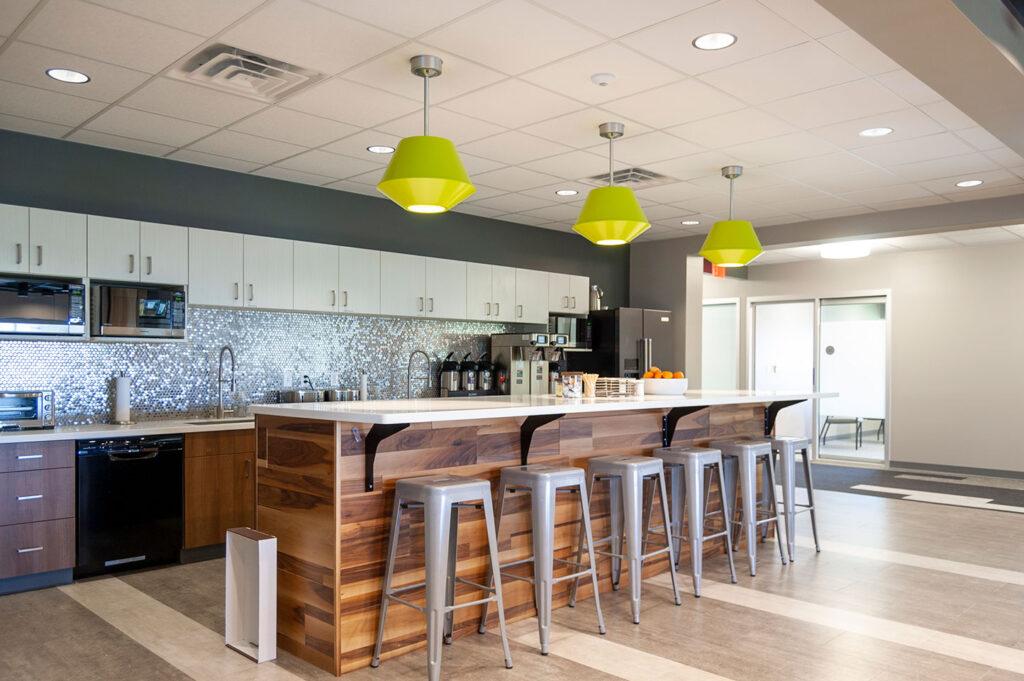
The office break room – it’s the place staff visit many times per day. They may be dropping off their lunch in the fridge, grabbing a cup of coffee, sharing a piece of birthday cake, eating lunch with co-workers, or just finding a spot to focus on some work other than in their cubicle. The “water cooler” days are over. Companies value their employees and want them to feel at home at work, so they are providing break rooms that aim to please. It’s more than just pleasing staff, it’s about building a culture of sharing, collaboration, inclusion, and performance.
r.o.i. Design has fashioned many break rooms, and here are some of the common employee requests:
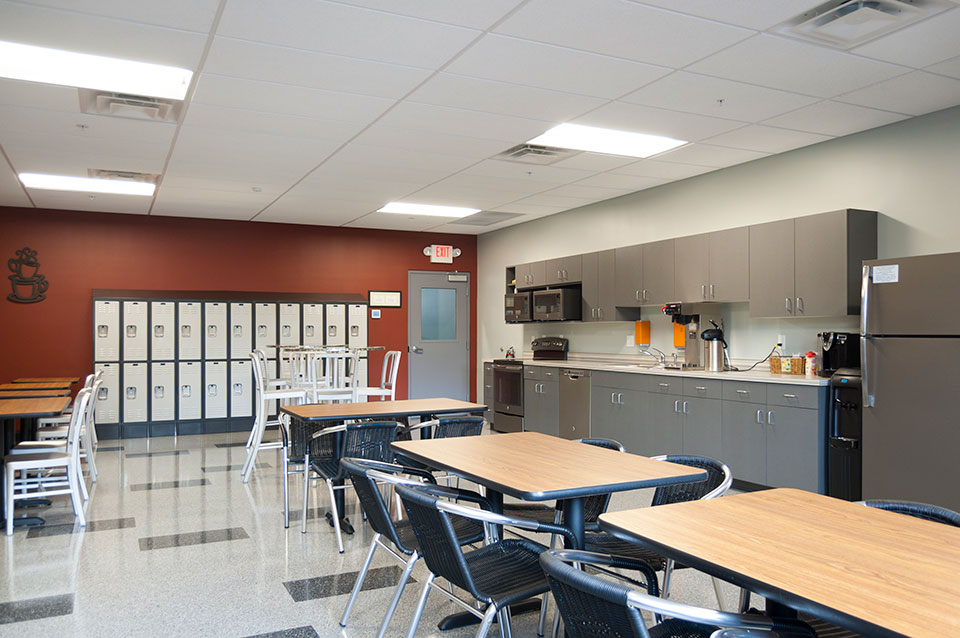
Enough refrigeration, coffee pots, and microwaves:
“I don’t always have a lot of time for breaks, and if there is a line for the appliances, I skip a break.”
A company with less than 18 employees can get away with one 33” wide refrigerator and one microwave, but as soon as the population tips that number, more appliances are needed. People will congregate at the same time. The value of informal collaboration is priceless, so no one should have to wait to be engaged with others.
Enough space so it’s not cluttered and messy:
“If I am going to spend time in that room, it has to be orderly and calm or I am not going to bother. I also want a variety of seating options as well as everything being clean.”
So, what is enough space, and how do owners legitimize that investment? In planning, if the break room can take on some of the requirements for meeting and gathering, and managers promote the space as a meeting space, then the break room creates an ROI. It can also be a great place to build an internal brand and messaging.
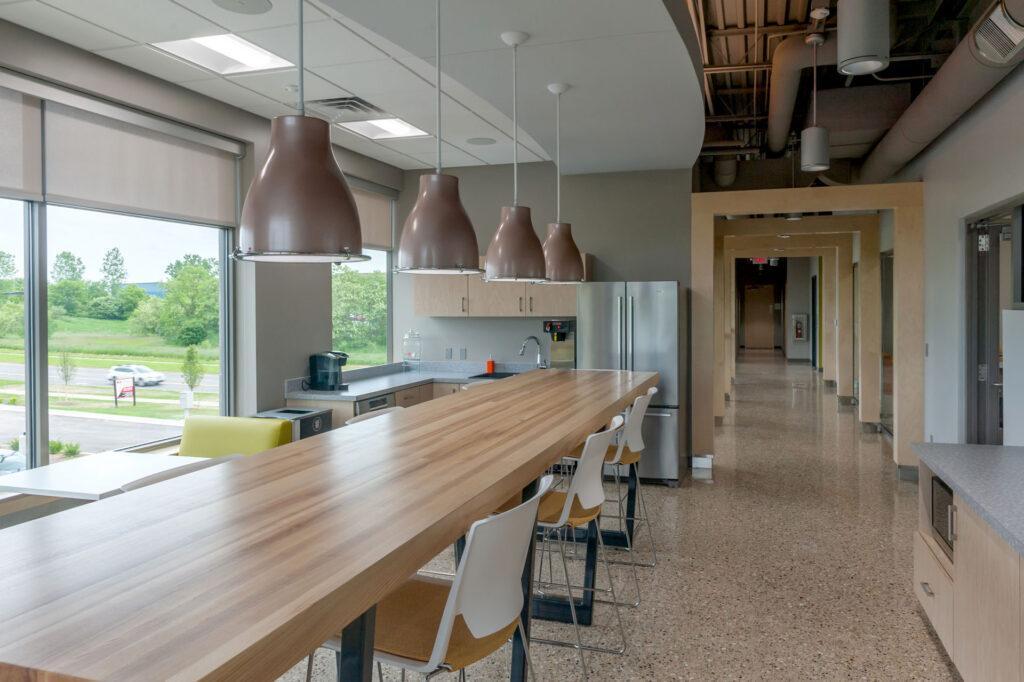
Natural light and natural lighting:
“My desk isn’t close to a window, so I look forward to spending time in the break room and look outside.”
Since most of our designs are in Michigan, the dark seasons can be brutal. Anything owners can do to create settings with natural light, adequate artificial light, related plant space, and outdoor space is significant.
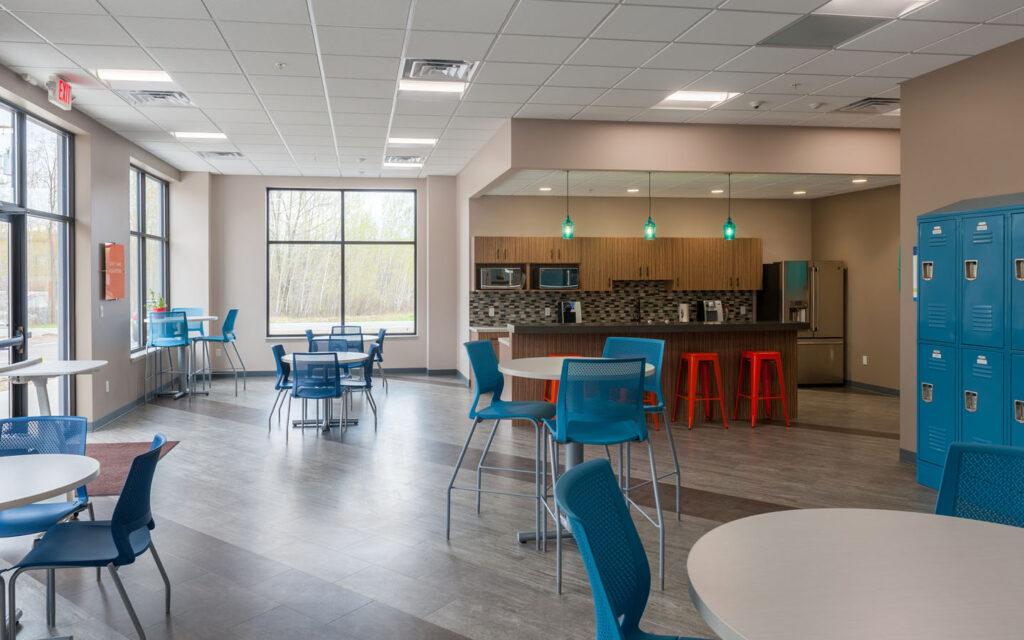
Healthy vending options:
“I don’t expect my work to provide my lunch but when I am too busy to get healthy food, it would be great to know I can get something more than a candy bar or a bag of chips.”
If owners don’t have resources to provide healthy snacks, there are a variety of vendors who have creative programs for healthy snacks.
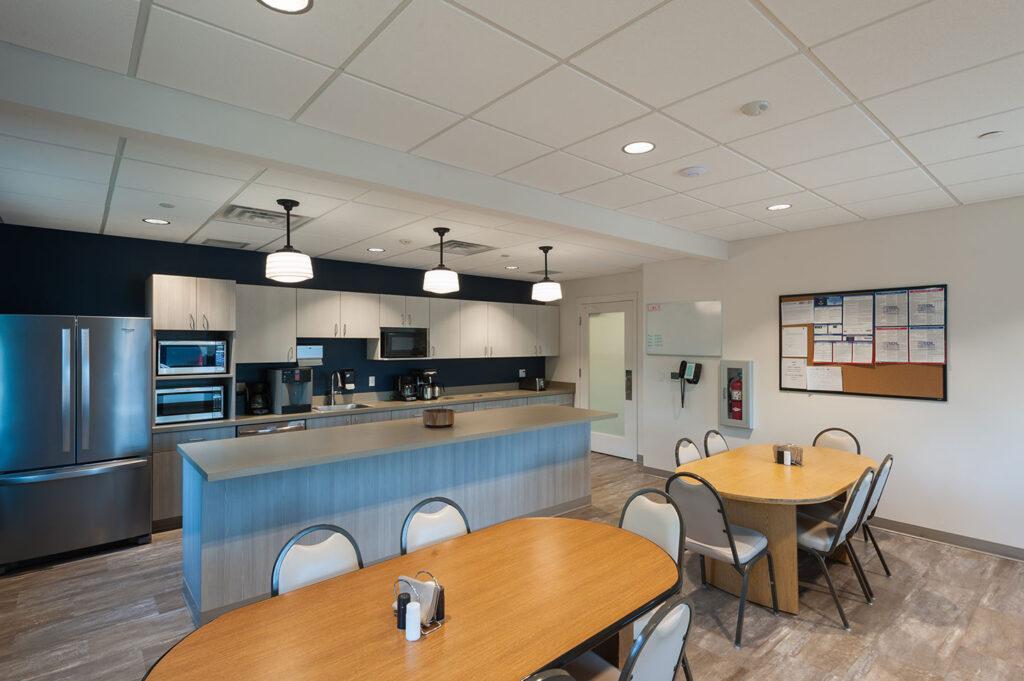
Information and Technology:
“My job is stressful, and I am staring at a screen all day, but it would be great to look at something other than spreadsheets and plans. Something that informs, educates and entertains me and takes me away from my day.”
Some companies rely on monitors that stream CNN, ABC, CBS, etc. Other companies are getting creative about streaming nature videos, replays of the weekend sports, and editorial videos that relate to the issues of the day.

The cool factor:
“If my break room looked like my local hangout, and my bosses were OK with that, it would say a lot about where I work. I think I could relax more if the break room didn’t feel like part of a corporate plan”.
The break rooms of today are one part Starbucks, one part Whole Foods, and one part Google. The recipe for cool shifts daily, but it doesn’t look like the rest of the office.
Our customers have talked about the hiring process, and the tour they give to prospective employees, and clearly the break room has a significant impact on how applicants feel about the company. So the break room is more than an afterthought, it has a role in describing the goals of the company and the current corporate culture.
Even six years ago, the buzz about the “casualization” of the workplace started to peak and has been growing since. In an article by Retrofit Magazine, “Today’s Corporate Break Rooms”, a very key point is featured: “If you’re a building owner or facility manager planning to retrofit your office space to incorporate a corporate café or town hall, one thing is clear: You may have the most attractive spaces designed and constructed but unless the culture of your organization is aligned with the casual work style they support, the investment will be for naught. Management must encourage and foster a more flexible approach to how and where people work for these casual breakout spaces to be successful…”
